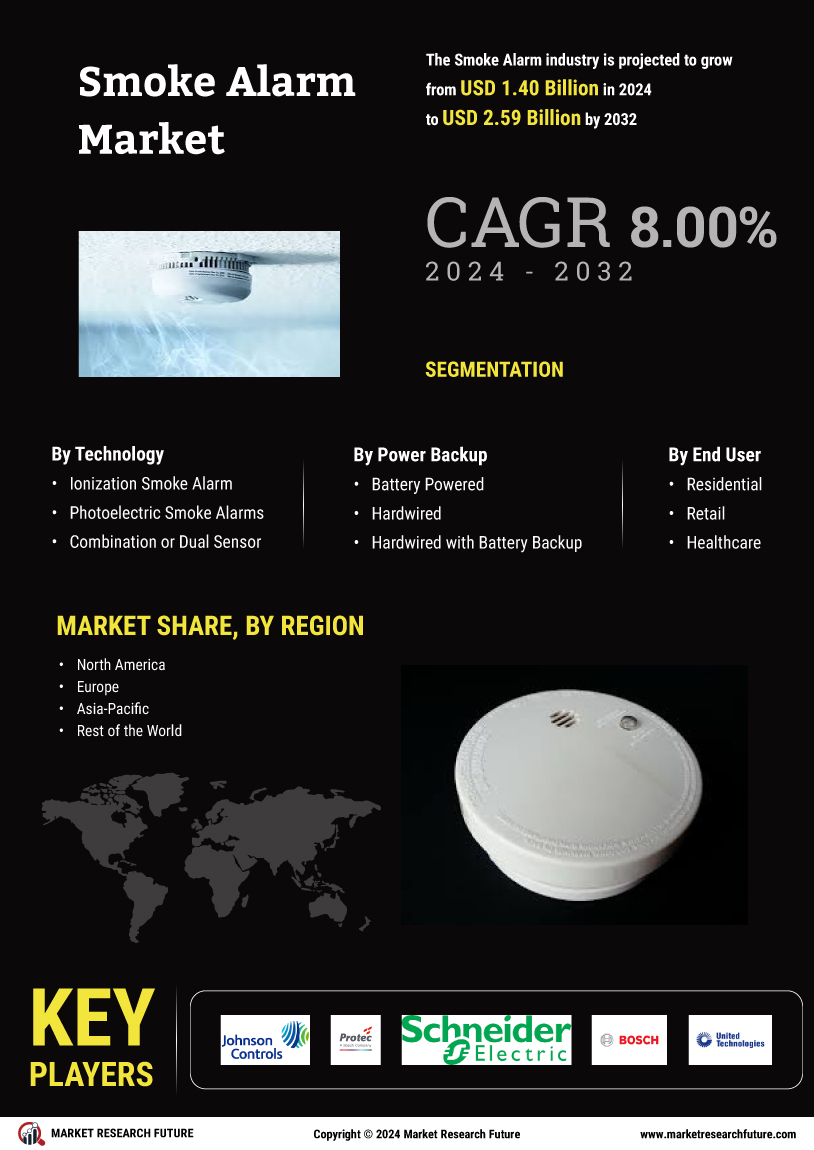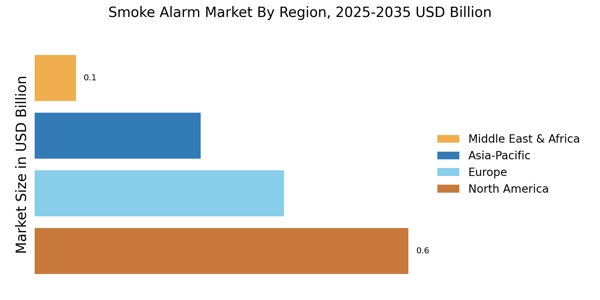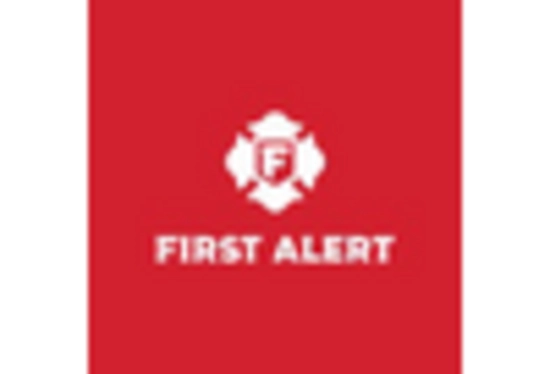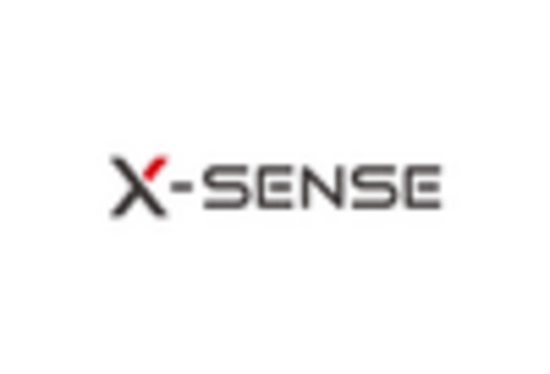Rising Awareness of Fire Safety
The increasing awareness regarding fire safety among consumers appears to be a pivotal driver for the Smoke Alarm Market. Educational campaigns and community outreach programs have significantly contributed to this heightened awareness. As a result, more households are investing in smoke alarms to ensure safety. According to recent data, the demand for smoke alarms has surged, with a notable increase in sales reported in residential sectors. This trend indicates that consumers are prioritizing safety measures, thereby propelling the growth of the Smoke Alarm Market. Furthermore, the emphasis on preventive measures against fire hazards is likely to continue influencing purchasing decisions, as individuals seek to protect their families and properties from potential dangers.
Growth in Residential Construction
The growth in residential construction is a significant driver for the Smoke Alarm Market. As new homes are built, the demand for smoke alarms is inherently increasing, as they are essential components of modern safety standards. Recent statistics indicate a steady rise in housing starts, which correlates with an uptick in smoke alarm installations. This trend is particularly evident in emerging markets, where urbanization and population growth are driving the construction of new residential units. As builders and developers prioritize safety features in their projects, the Smoke Alarm Market is poised for growth, with an expanding customer base seeking reliable fire safety solutions.
Regulatory Mandates and Building Codes
Regulatory mandates and building codes play a crucial role in shaping the Smoke Alarm Market. Governments and local authorities are implementing stringent regulations that require the installation of smoke alarms in residential and commercial properties. These regulations are designed to enhance safety standards and reduce fire-related incidents. Market data indicates that regions with strict enforcement of these codes experience higher penetration rates of smoke alarms. Consequently, compliance with these regulations is likely to drive demand, as property owners seek to adhere to legal requirements. The ongoing evolution of building codes suggests that the Smoke Alarm Market will continue to expand, as new standards emerge to address safety concerns.
Technological Advancements in Smoke Alarms
Technological advancements are transforming the Smoke Alarm Market, with innovations such as interconnected systems and smart smoke detectors gaining traction. These modern devices offer enhanced features, including smartphone notifications and integration with home automation systems. The market data suggests that the adoption of smart smoke alarms is on the rise, as consumers increasingly prefer products that provide real-time alerts and remote monitoring capabilities. This shift towards technology-driven solutions is likely to attract a broader customer base, including tech-savvy individuals and families. As manufacturers continue to innovate, the Smoke Alarm Market is expected to witness sustained growth, driven by the demand for advanced safety solutions that align with contemporary lifestyles.
Increased Focus on Home Safety and Security
An increased focus on home safety and security is emerging as a vital driver for the Smoke Alarm Market. Consumers are becoming more proactive in safeguarding their homes, leading to a surge in demand for smoke alarms as part of comprehensive safety measures. Market data reflects a growing trend where homeowners are investing in multiple safety devices, including smoke alarms, to create a secure living environment. This heightened awareness of safety is likely to be influenced by various factors, including media coverage of fire incidents and the promotion of safety products. As the emphasis on home security continues to rise, the Smoke Alarm Market is expected to benefit from this shift in consumer behavior.

















Leave a Comment